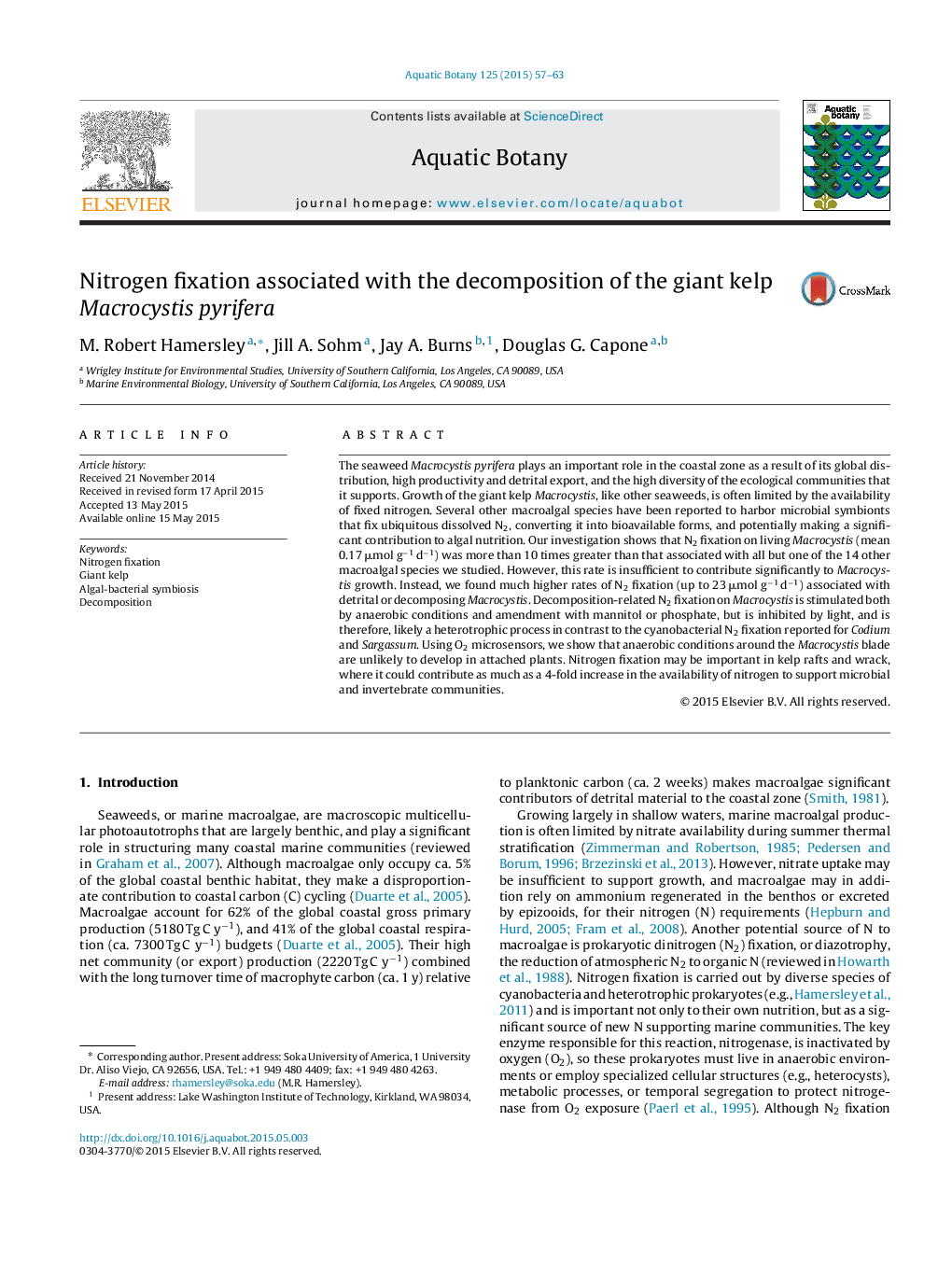| کد مقاله | کد نشریه | سال انتشار | مقاله انگلیسی | نسخه تمام متن |
|---|---|---|---|---|
| 4527631 | 1625817 | 2015 | 7 صفحه PDF | دانلود رایگان |

• N2 fixation on the kelp Macrocystis averaged >10 times that on other seaweeds.
• N2 fixation on decomposing kelp averaged >10-fold greater than on living kelp.
• Evidence was consistent with N2 fixation by prokaryotic heterotrophic epibionts.
• Hypoxic conditions supporting N2 fixation are likely restricted to wrack and rafts.
• N2 fixation on decomposing kelp may increase N availability to detrital communities.
The seaweed Macrocystis pyrifera plays an important role in the coastal zone as a result of its global distribution, high productivity and detrital export, and the high diversity of the ecological communities that it supports. Growth of the giant kelp Macrocystis, like other seaweeds, is often limited by the availability of fixed nitrogen. Several other macroalgal species have been reported to harbor microbial symbionts that fix ubiquitous dissolved N2, converting it into bioavailable forms, and potentially making a significant contribution to algal nutrition. Our investigation shows that N2 fixation on living Macrocystis (mean 0.17 μmol g−1 d−1) was more than 10 times greater than that associated with all but one of the 14 other macroalgal species we studied. However, this rate is insufficient to contribute significantly to Macrocystis growth. Instead, we reported much higher rates of N2 fixation (up to 23 μmol g−1 d−1) associated with detrital or decomposing Macrocystis. Decomposition-related N2 fixation on Macrocystis is stimulated both by anaerobic conditions and amendment with mannitol or phosphate, but is inhibited by light, and is therefore, likely a heterotrophic process in contrast to the cyanobacterial N2 fixation reported for Codium and Sargassum. Using O2 microsensors, we show that anaerobic conditions around the Macrocystis blade are unlikely to develop in attached plants. Nitrogen fixation may be important in kelp rafts and wrack, where it could contribute as much as a 4-fold increase in the availability of nitrogen to support microbial and invertebrate communities.
Journal: Aquatic Botany - Volume 125, August 2015, Pages 57–63